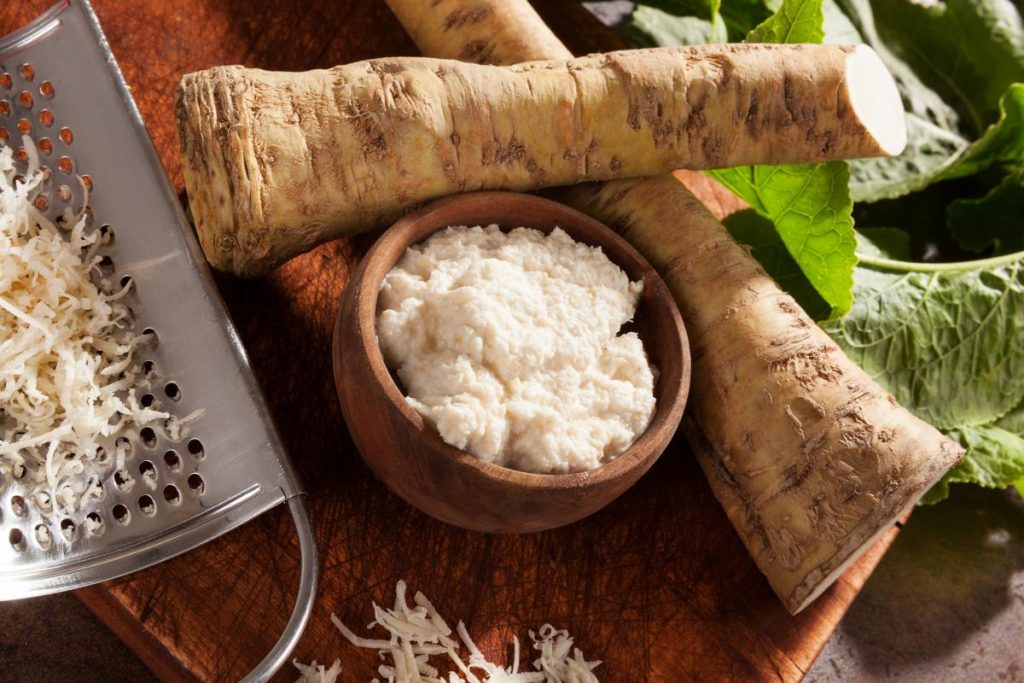How to Grow Horseradish – A Guide to Growing Horseradish
Horseradish is a perennial which is easy to grow . As it grows like a weed it is often cultivated in large pots or bottomless buckets sunk into the ground to keep it in check. Horseradish is ideal for growing in a poor spot next to a hedge as it is fine growing in semi-shade .
Horseradish is grown for the pungent root which is used to make Horseradish sauce which is an essential accompaniment to a roast beef dinner .
Varieties of Horseradish
Roots are available from seed and plant suppliers for cultivation.
Pests and Problems with Horseradish
While Horseradish is easy to grow, it is a member of the brassica family and can therefore suffer from some of the brassica pests such as the Cabbage White Butterfly caterpillar .
Older roots will become woody so it is best dug up and divided to produce new plants.
Sowing & Growing Horseradish
Horseradish root cuttings, also known as ‘thongs’ for some reason, are best planted in the spring in a sunny position (although it will cope with shade) in well-drained soil (due to the long tap root) with some added organic matter or well-rotted manure.
Horseradish root cuttings should be planted about 5 cms (2 inches) below soil level and allowing 46-51 cms (18–20 inches) between plants. You will need a large deep pot if you are growing Horseradish in a container as it can grow up to 1.5 meters (5 feet) tall .
After planting top dress with a multi-purpose fertilizer and water well. Plants should be watered in dry spells.
Harvesting Horseradish
In the Autumn cut back the foliage and carefully dig up the roots.
Any small pieces of root left in the ground will grow the following spring or you can leave some roots in situ to lift and divide in the spring .
Eating & Storing
Horseradish is used to make the classical sauce or as an ingredient in pickles and relishes.
Roots should be stored in a cool, dry, dark place. The root should be grated for freezing .
Horseradish emits very strong fumes when grated so it is best done in a well-ventilated room, preferably with an open window. Protective goggles help if the fumes irritate your eyes.




